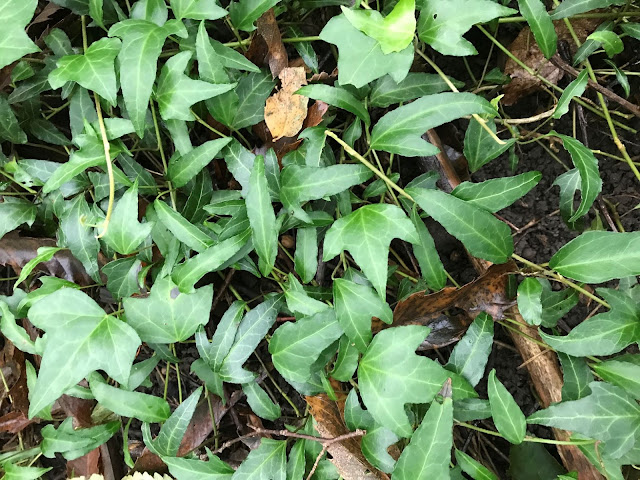Atlantic Ivy (Hedera hibernica) is the dominant ivy along the western fringes of Britain, while further east and inland it is generally considered to be replaced by Common Ivy (Hedera helix). The very robust cultivar 'Hibernica' (also known as 'Irish Ivy') being the exception to this, having been widely planted historically and subsequently has spread widely in suburban areas, railway banks and woodland. Despite this it still seems to be under-recorded. In part this is because in some counties it isn't recorded to cultivar level, instead being lumped under Atlantic Ivy. However, there do seem to be some genuine large gaps that are inconsistent with its ubiquity elsewhere. The BSBI database still lists it and maps it under Common Ivy, which also may confuse matters.
I am the Botanical Society of Britain and Ireland (BSBI) Vice-County Recorder for Huntingdonshire (VC31) and Mid-West Yorkshire (VC64). I've set-up this botany blog to more readily share news on recent wildflower discoveries made by myself and others, to encourage wider recording, and as a way to challenge myself to take more photographs of the plants I find. See the BSBI website for more information on the work of the society and the diverse range of botany projects currently in progress.
Sunday, 18 October 2020
Atlantic Ivy - Overlooked as a Garden Escape?
Images of Hedera hibernica 'Hibernica', Swillington Park (VC64)
Hedera hibernica cf. 'Gavotte'
This is the third type of Atlantic Ivy I have found in the woodlands around Oulton Park. 'Hibernica' is of course common throughout, but there is another large leaved form which seems to the old cultivar 'Lobatomajor' (and it may sit within a group of cultivars that comprise the Hibernica Group, as the distinguishing distinctively lobed large leaves only start to appear once it starts to climb).
Hedera hibernica 'Lobatomajor'
So inspired by 'Gavotte', and it being a good autumn project now that most plants have gone over for the year, I visited several woodlands in urban fringe locations this weekend to see if I could find more Atlantic Ivy. Something that turned out to be relatively easy, the trick being to focus on those plants with the largest juvenile foliage and/or leaves redolent of 'Hibernica' in shape. None of these plants was as distinctive as the above forms, and instead resemble more typical wild type Atlantic Ivy. But once you get your eye in they do have a distinctive jizz, and the hairs later confirmed these field identifications. It was by no means dominant within the woodlands concerned, but where it has colonised it generally forms dense stands. I'm recording all these finds as neophytes, as I am assuming that they have a garden or other introduced origin. I suspect focussed searching will find them to be relatively frequent in other suburban and urban edge locations.
Hedera hibernica in Hollinhurst Wood, Allerton Bywater (VC64)
Subscribe to:
Post Comments (Atom)












No comments:
Post a Comment